Grow Green with Industrial Hemp Seeds
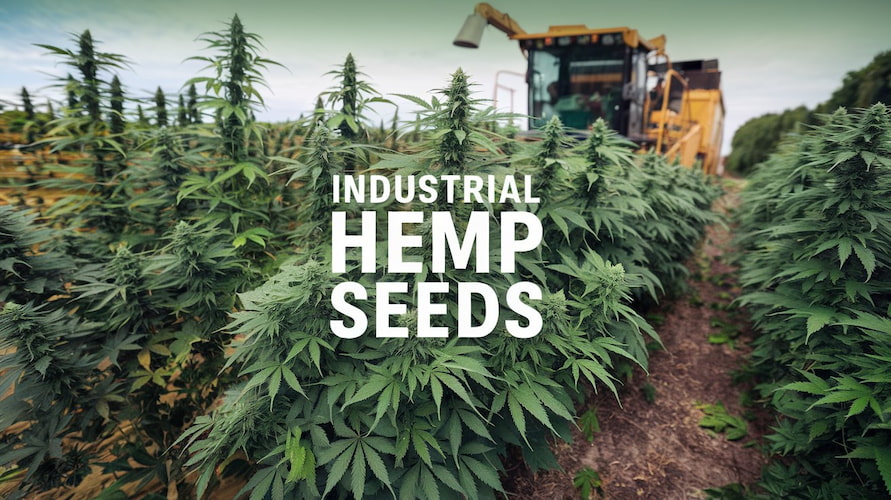
Welcome to our comprehensive guide on growing industrial hemp seeds! In this article, we will explore industrial hemp’s incredible potential and how it can contribute to a greener future. Whether you are a farmer looking to diversify your crops or an enthusiast interested in sustainable practices, this guide will provide you with valuable insights on cultivating industrial hemp seeds.
Industrial hemp is a versatile plant that offers numerous benefits for sustainable farming practices. From fiber production to non-dairy milk, bioplastics, and CBD extracts, hemp can be used in a wide range of industries. As the demand for hemp products continues to rise, growing industrial hemp seeds can provide farmers with remarkable profits.
Key Takeaways:
- Industrial hemp is a renewable resource with various uses.
- Growing industrial hemp seeds can be highly profitable.
- Hemp cultivation contributes to sustainable farming practices.
- Demand for hemp products is increasing.
- By understanding the cultivation process, farmers can maximize yield and quality.
What Is Hemp?
Hemp is a versatile plant that belongs to the Cannabis sativa species. While it is closely related to marijuana, hemp is classified as cannabis plants and products that contain less than 0.3 percent THC (tetrahydrocannabinol). Unlike marijuana, hemp does not have the same psychoactive effects. Instead, it is primarily grown for industrial purposes, including the production of fiber, non-dairy milk, bioplastics, and CBD extracts. Hemp seed varieties play a crucial role in determining the characteristics and uses of the plant.
Multiple hemp seed varieties are available, each with its own unique traits and qualities. These varieties have been bred over thousands of years to express different characteristics and uses. For example, some hemp seed varieties are specifically bred for fiber production, while others are cultivated for their CBD (cannabidiol) content. Additionally, certain hemp seed varieties are well-suited for specific environmental conditions or farming practices.
When choosing hemp seed varieties, farmers should consider their intended purpose and desired outcomes. Whether it’s fiber production, CBD extraction, or other industrial applications, selecting the right hemp seed variety is crucial for achieving optimal results. By understanding the different hemp seed varieties and their respective attributes, farmers can make informed decisions that will contribute to successful hemp cultivation.
| Hemp Seed Variety | Characteristics | Common Uses |
|---|---|---|
| Fiber Hemp | Tall and sturdy plants, long fibers | Textiles, paper, construction materials |
| CBD Hemp | High CBD content, low THC | Pharmaceuticals, wellness products |
| Seed Hemp | Small and oily seeds | Food products, non-dairy milk |
Hemp vs. Marijuana
Hemp and marijuana are both derived from the Cannabis sativa plant, but they have distinct differences. Hemp is classified as cannabis plants and products that contain less than 0.3 percent THC, while marijuana contains higher levels of THC. THC, or tetrahydrocannabinol, is the psychoactive compound responsible for the “high” associated with marijuana use. Hemp, on the other hand, is grown for industrial purposes and does not have the same psychoactive effects as marijuana.
One key difference between hemp and marijuana lies in their cultivation and usage. Hemp is grown specifically for its fibrous stalks and seeds, which have a wide range of industrial applications. It can be used to produce textiles, paper, bioplastics, construction materials, and even biofuels. Industrial hemp seeds are cultivated with a focus on high fiber content, rapid growth, and low THC levels. On the other hand, marijuana is primarily cultivated for its psychoactive effects and high THC content.
When it comes to cultivation, it is important to choose non-GMO hemp seeds. Non-GMO, or non-genetically modified organism, seeds ensure the quality and purity of the plants. By selecting non-GMO hemp seeds, farmers can grow hemp plants that are free from genetically modified traits, thereby preserving the natural characteristics and benefits of the plant. Non-GMO hemp seeds also contribute to the sustainability and environmental friendliness of hemp cultivation, aligning with the principles of organic farming.
“Hemp is classified as cannabis plants and products that contain less than 0.3 percent THC, while marijuana contains higher levels of THC.”
Industrial Hemp Seeds for Sustainable Farming
Farmers looking to promote environmental consciousness should consider using industrial hemp seeds for sustainable farming practices. Industrial hemp has a high growth rate, requires minimal pesticide and herbicide use, and can be cultivated without depleting soil nutrients. By utilizing industrial hemp seeds, farmers can reduce water consumption, improve soil health, and decrease carbon emissions.
Furthermore, industrial hemp cultivation offers numerous benefits for farmers in terms of profitability. The demand for hemp products, such as CBD extracts, fiber, and industrial materials, is rapidly increasing. This presents farmers with a lucrative market opportunity, allowing them to diversify their income streams and tap into a growing industry. By opting for industrial hemp seeds, farmers can grow a versatile crop that not only benefits the environment but also boosts their economic prospects.
In Summary
- Hemp and marijuana are derived from the same plant species, Cannabis sativa, but have different levels of THC.
- Hemp is grown for industrial purposes, while marijuana is cultivated for its psychoactive effects.
- Choosing non-GMO hemp seeds ensures the quality and purity of the plants.
- Industrial hemp cultivation promotes sustainable farming practices and offers profitable opportunities for farmers.
Male vs. Female Hemp Plants: Understanding the Difference
When it comes to growing industrial hemp seeds, it’s important to understand the difference between male and female plants. Cannabis species are dioecious, meaning they have separate male and female plants. Male plants produce pollen, while female plants produce flowers and seeds.
The main goal of hemp cultivation is to obtain high-quality flowers and seeds, so most farmers prefer to focus on female plants. Female plants produce the valuable cannabinoids and terpenes that are sought after in the hemp industry. Male plants, on the other hand, are typically used for breeding purposes or discarded to prevent fertilization of female plants.
To ensure that your crop consists mainly of female plants, you can opt for certified hemp seeds. Certified hemp seeds have been tested and verified to have a high percentage of female plants. This eliminates the need for gender identification and increases the chances of having a successful harvest with abundant flowers and seeds.
The Benefits of Using Certified Hemp Seeds:
- Increased yield of high-quality flowers and seeds
- Reduced risk of unwanted pollination
- Elimination of the need for gender identification
- Assurance of planting genetically stable and reliable seeds
By choosing certified hemp seeds, farmers can have confidence in the quality and characteristics of their crops. This ultimately leads to a more efficient and profitable hemp cultivation process.
| Benefits of Certified Hemp Seeds | Non-Certified Hemp Seeds |
|---|---|
| Increased yield of high-quality flowers and seeds | Uncertain yield and quality |
| Reduced risk of unwanted pollination | Potential for cross-pollination |
| Elimination of the need for gender identification | Time-consuming and labor-intensive gender identification process |
| Assurance of planting genetically stable and reliable seeds | Risk of planting genetically unstable or unreliable seeds |
How Much Light Does a Hemp Plant Need?
Proper lighting is crucial for the successful growth of hemp plants. The amount of light a hemp plant requires depends on its growth stage. During the vegetative phase, hemp plants need around 18-24 hours of light per day to promote leafy growth and establish a strong root system. On the other hand, during the flowering phase, hemp plants require a shorter photoperiod of approximately 12 hours of light and 12 hours of darkness to trigger the production of flowers.
Superior hemp seeds often come with specific light requirements. Some varieties may thrive in lower light conditions, while others may require intense lighting. Growers can use various methods to provide the right amount of light to their hemp plants. This can be achieved through natural sunlight, artificial lighting such as LED or high-intensity discharge (HID) lights, or a combination of both. It’s important to monitor the light intensity and ensure that the plants do not receive excessive or insufficient light.
Additionally, growers can use techniques such as topping or pruning to manage the canopy of hemp plants, allowing for better light penetration and distribution throughout the plant. This can promote even growth and maximize the utilization of available light. By providing optimal light conditions, growers can enhance the overall health, yield, and quality of their hemp plants.
| Growth Stage | Lighting Requirements |
|---|---|
| Vegetative Phase | 18-24 hours of light per day |
| Flowering Phase | 12 hours of light and 12 hours of darkness per day |
How To Grow Hemp Indoors
Growing hemp indoors provides growers with better control over plant growth and flowering. By creating a controlled environment, growers can optimize the conditions for germinating hemp seeds and nurturing young plants. Here are some key steps to successfully grow hemp indoors:
1. Germinating Hemp Seeds
Start by selecting organic hemp seeds to ensure the production of high-quality, chemical-free plants. Pre-soak the seeds in water for 24-48 hours to stimulate germination. This process helps to soften the seed coat and encourage faster growth. Plant the pre-soaked seeds in small pots or trays filled with a well-draining growing medium. Maintain optimal temperature and humidity levels to promote germination, typically around 70-80°F (21-27°C) and 70-80% humidity. Place the pots or trays under grow lights or in a warm, well-lit area.
2. Maintaining Optimal Conditions
Once the seeds have germinated and seedlings have emerged, maintain the optimal temperature range of 70-80°F (21-27°C) and reduce humidity to around 40-60%. Use a thermometer and hygrometer to monitor the conditions accurately. Provide adequate lighting by using full-spectrum LED grow lights or high-intensity discharge (HID) lights. Adjust the light schedule to provide 18-24 hours of light during the vegetative phase and 12 hours of light during the flowering phase.
3. Providing Care and Nurturing
Throughout the growth stages, closely monitor the plants for any signs of nutrient deficiencies, pests, or diseases. Maintain a balanced nutrient regimen by using organic fertilizers specifically formulated for hemp cultivation. Water the plants regularly, ensuring the growing medium is moist but not overly saturated. Prune the plants as needed to encourage bushier growth and maximize light penetration. Support the plants with stakes or trellises to prevent breakage during the flowering phase.
| Recommendation | Benefits |
|---|---|
| Choose organic hemp seeds | Ensures high-quality, chemical-free plants |
| Provide optimal temperature and humidity | Promotes healthy growth and development |
| Use full-spectrum LED or HID lights | Optimizes light exposure for photosynthesis |
| Maintain a balanced nutrient regimen | Prevents nutrient deficiencies and promotes vigorous growth |
| Regularly monitor plants for pests and diseases | Prevents infestations and ensures plant health |
By following these steps and providing the necessary care and nurturing, growers can successfully cultivate hemp indoors. With organic hemp seeds and optimal growing conditions, indoor hemp cultivation can result in high-quality plants that contribute to a sustainable and eco-friendly future.
How To Care for Hemp Seedlings
Once your hemp seeds have germinated and sprouted into seedlings, it is crucial to provide them with the right care to ensure their healthy development. Here are some essential tips on caring for your hemp seedlings:
1. Temperature
Hemp seedlings prefer temperatures between 60°F and 70°F (15°C to 21°C) during the day and slightly cooler temperatures at night. Maintain a consistent temperature range to promote optimal growth and avoid stressing the seedlings.
2. Humidity
Seedlings thrive in a humid environment, with humidity levels ranging between 70% and 80%. To maintain the desired humidity, you can use a humidity dome or cover the seedlings with a clear plastic bag, ensuring proper ventilation to prevent fungal diseases.
3. Light
Provide your hemp seedlings with ample light to support their growth. They require 16 to 18 hours of light daily, either natural sunlight or artificial grow lights. Hang the lights 2 to 4 inches (5 to 10 cm) above the seedlings and adjust their height as the plants grow.
By following these care guidelines, you can foster healthy growth and ensure the success of your hemp seedlings. Remember to monitor the soil moisture and water the seedlings appropriately, avoiding overwatering or allowing the soil to dry out completely. With proper care, your hemp seedlings will develop into robust plants ready for transplantation.
How To Grow Vegetative Hemp Plants (Hemp Without Flowers)
To successfully grow vegetative hemp plants, it is crucial to provide them with optimal environmental conditions. These conditions include maintaining specific temperature and humidity levels and providing sufficient lighting. By following these guidelines, you can promote healthy leafy growth in your hemp plants and ensure they thrive.
Temperature and Humidity
Vegetative hemp plants thrive in temperatures ranging from 60 to 77 degrees Fahrenheit (15 to 25 degrees Celsius). It is important to maintain a consistent temperature within this range to avoid stress and promote vigorous growth. Additionally, hemp plants prefer humidity levels between 50% and 70%. This humidity range provides the plants with adequate moisture without creating an environment prone to mold or mildew.
Lighting Requirements
Proper lighting is essential for vegetative hemp growth. Hemp plants require 18 to 24 hours of light each day to thrive in the vegetative stage. High-intensity discharge (HID) lights, such as metal halide (MH) or high-pressure sodium (HPS) lights, are commonly used for indoor cultivation. These lights emit the necessary spectrum of light to promote healthy leafy growth.
| Lighting Type | Light Duration | Light Spectrum |
|---|---|---|
| Metal Halide (MH) | 18-24 hours/day | Blue spectrum (cool light) |
| High-Pressure Sodium (HPS) | 18-24 hours/day | Red spectrum (warm light) |
It is important to note that vegetative hemp plants do not require the same spectrum of light as flowering plants. Instead, they benefit from a blue spectrum (cool light) that promotes leafy growth. By providing the appropriate lighting conditions and maintaining the ideal temperature and humidity levels, you can cultivate healthy vegetative hemp plants.
How To Grow Flowering Hemp Plants
Growing flowering hemp plants requires careful attention to specific temperature, humidity, and light conditions to promote the development of flower buds. By creating an ideal environment, you can ensure that your hemp plants thrive and produce high-quality flowers with the desired cannabinoid content.
To successfully grow flowering hemp plants, it is crucial to control the photoperiod, which refers to the duration of light and dark periods. Flowering is triggered when the dark period (night) is approximately 12 hours long. By adjusting the lighting schedules, either by providing natural or artificial light, you can manipulate the photoperiod and stimulate flower development.
Using premium hemp seeds is essential for achieving the desired characteristics and traits in your flowering hemp plants. These seeds are carefully selected and bred to produce high-quality hemp flowers with optimal cannabinoid content. By choosing premium hemp seeds, you can ensure that your plants will yield a superior harvest.
Remember to monitor and adjust temperature and humidity levels to create an ideal growing environment for your flowering hemp plants. Providing the right conditions will support healthy growth and maximize the production of beautiful, potent hemp flowers.
Conclusion
Industrial hemp seeds offer farmers a lucrative opportunity to embrace sustainable farming practices and contribute to a greener future. By understanding the different aspects of hemp cultivation, from seed selection to flowering, farmers can maximize their yield and produce high-quality hemp plants.
Choosing the right industrial hemp seeds is crucial for success. Different hemp seed varieties have unique traits and qualities that cater to various industrial purposes. Whether you are looking for fiber production, non-dairy milk, bioplastics, or CBD extracts, selecting the right seeds will ensure the desired outcomes.
Additionally, providing optimal growing conditions is essential for the health and vitality of your hemp plants. For indoor cultivation, organic hemp seeds are recommended to ensure chemical-free production. Controlling temperature, humidity, and lighting conditions will help you achieve vigorous growth at every stage of your hemp plants’ lifecycle.
By following best practices and using high-quality industrial hemp seeds, farmers can not only maximize their profits but also contribute to a sustainable future. As the demand for hemp products continues to rise, investing in industrial hemp seeds is a smart choice that holds promising opportunities for farmers and the environment.
FAQs
What is industrial hemp?
Industrial hemp is a versatile plant that can be used for various purposes, including fiber production, non-dairy milks, bioplastics, and CBD extracts. It is a renewable resource that offers numerous benefits for sustainable farming practices.
What is the difference between hemp and marijuana?
Hemp and marijuana are both derived from the Cannabis sativa plant, but they have distinct differences. Hemp is classified as cannabis plants and products that contain less than 0.3 percent THC, while marijuana contains higher levels of THC. Hemp is grown for industrial purposes and does not have the same psychoactive effects as marijuana.
What is the difference between male and female hemp plants?
Hemp plants are dioecious, meaning they have separate male and female plants. When growing hemp from seed, approximately 50% of the plants will be female and 50% male. However, feminized hemp seeds are available, which produce only female plants. Male plants are typically used for breeding or discarded to prevent fertilization of female plants.
How much light does a hemp plant need?
Hemp plants require specific light conditions for vegetative and flowering phases. Flowering is triggered when the dark period (night) is approximately 12 hours long. Controlled environments, such as grow tents or blackout covers, allow growers to manipulate the photoperiod. Different varieties of hemp, including superior hemp seeds, have specific light requirements and optimal growing conditions.
How do I grow hemp indoors?
Growing hemp indoors allows growers to better control plant growth and flowering. Germinating hemp seeds indoors requires specific environmental conditions, such as pre-soaking the seeds, maintaining optimal temperature and humidity levels, and using appropriate lighting. Organic hemp seeds are recommended for indoor cultivation to ensure the production of high-quality, chemical-free plants.
How do I care for hemp seedlings?
Hemp seedlings thrive in specific temperature, humidity, and light conditions. Maintaining the appropriate temperature range and humidity levels and providing adequate lighting are crucial for healthy seedling development. Using bulk hemp seeds ensures a continuous supply of seedlings for transplantation and cultivation.
How do I grow vegetative hemp plants?
Vegetative hemp plants require specific temperature, humidity, and light conditions to promote leafy growth. Providing optimal environmental conditions, such as temperature control and sufficient lighting, is essential for healthy vegetative growth. Using high-quality hemp seeds ensures the desired characteristics and traits in the plants.
How do I grow flowering hemp plants?
Flowering hemp plants require specific temperature, humidity, and light conditions to promote the development of flower buds. Controlling the photoperiod and adjusting lighting schedules is vital for triggering flowering. Using premium hemp seeds ensures the production of high-quality hemp flowers with the desired cannabinoid content.
Suggested Articles
;)
;)
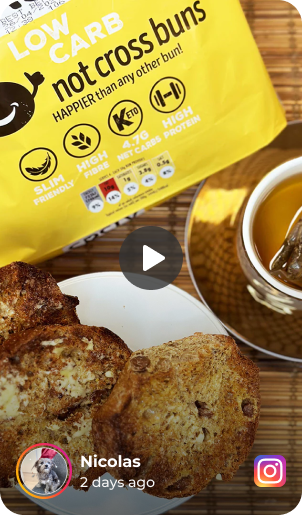;)



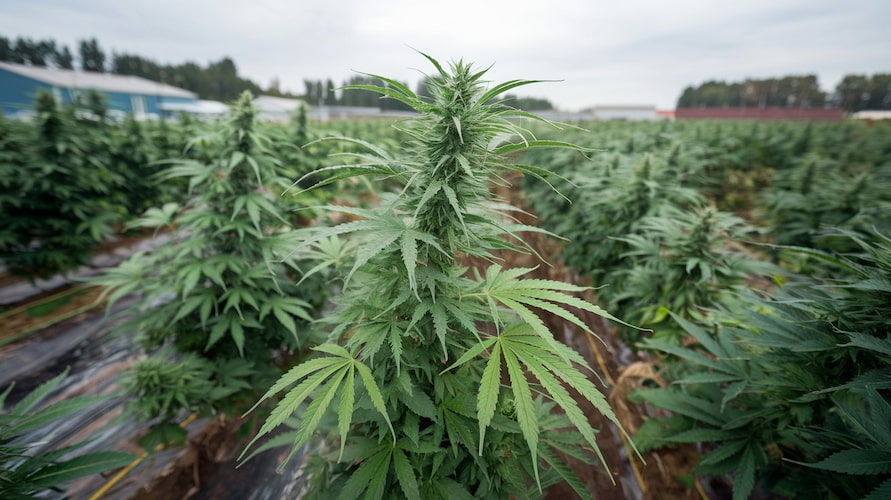


 03 Jul 2025
03 Jul 2025  10 min read
10 min read
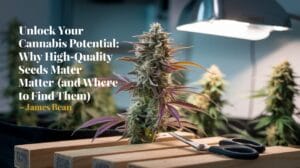
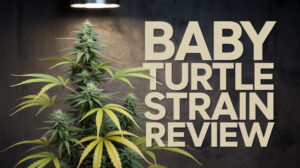
 April 14, 2025
April 14, 2025 


RESPONSES (0)
No responses yet. Be the first to respond!